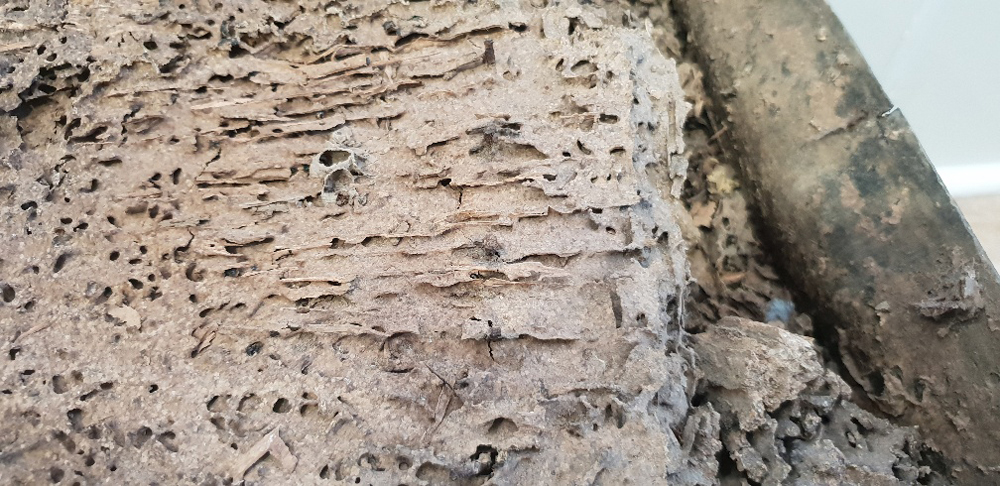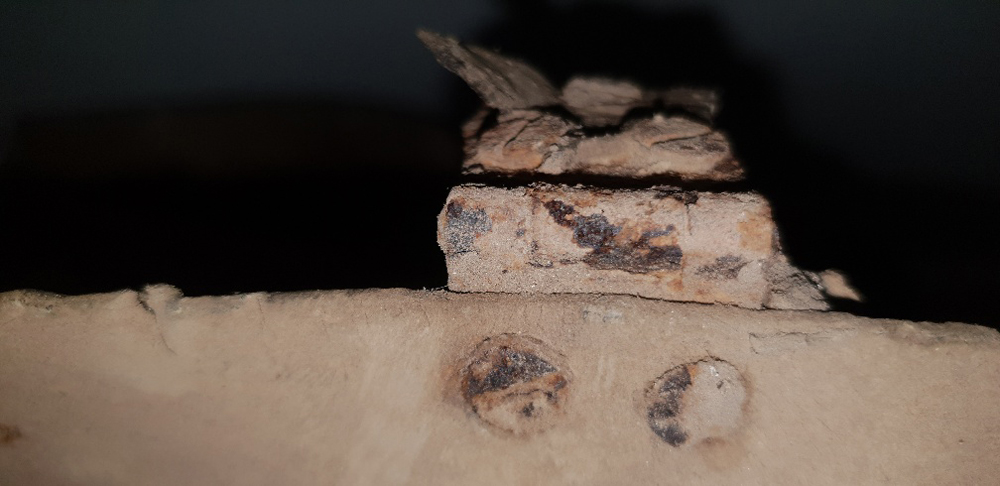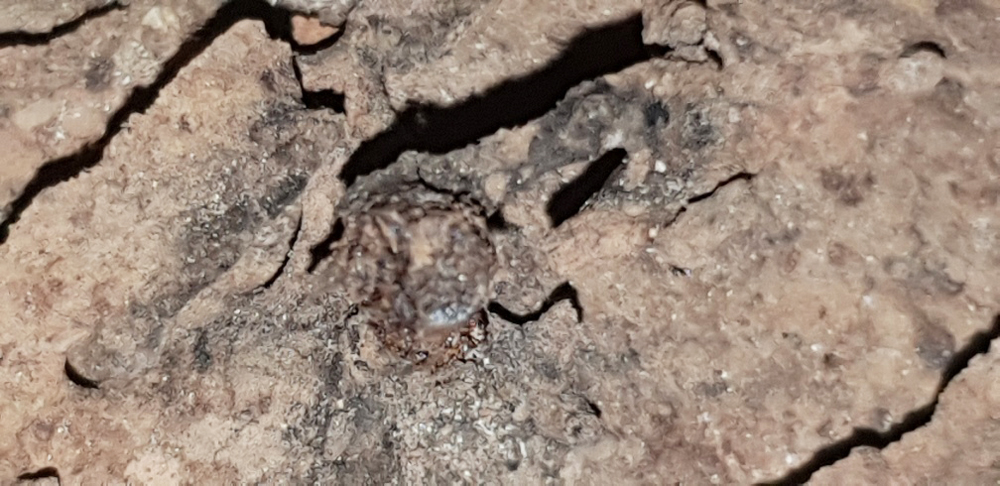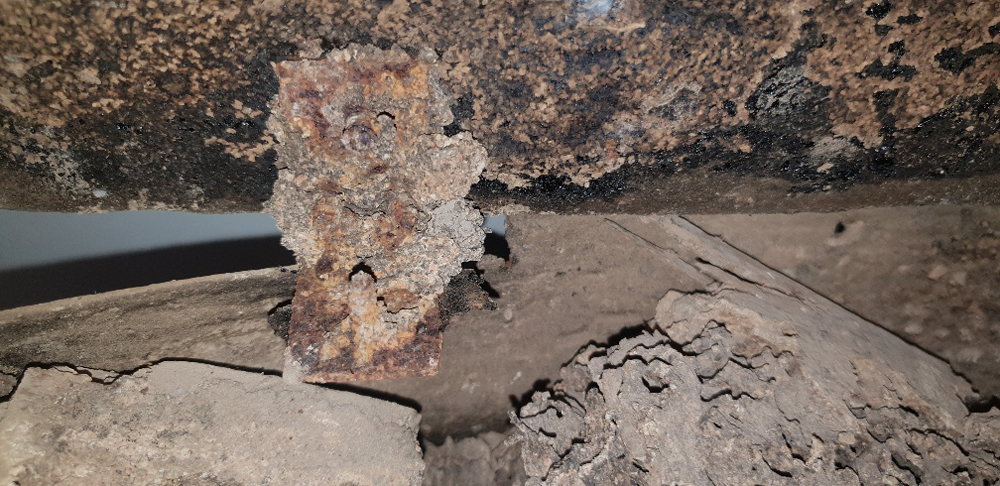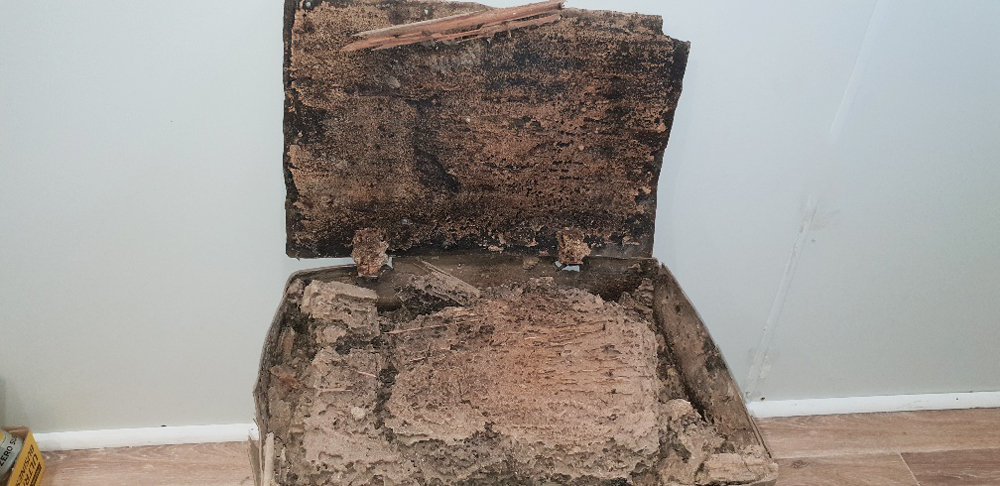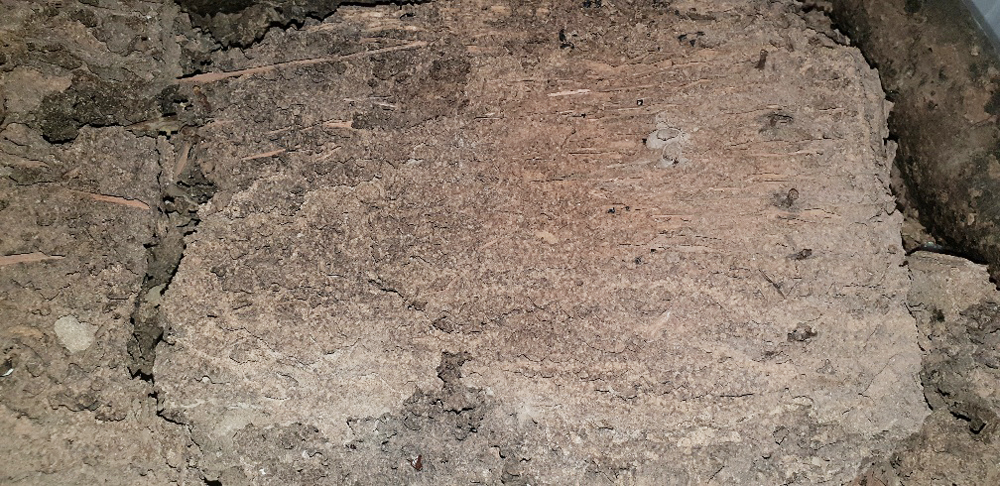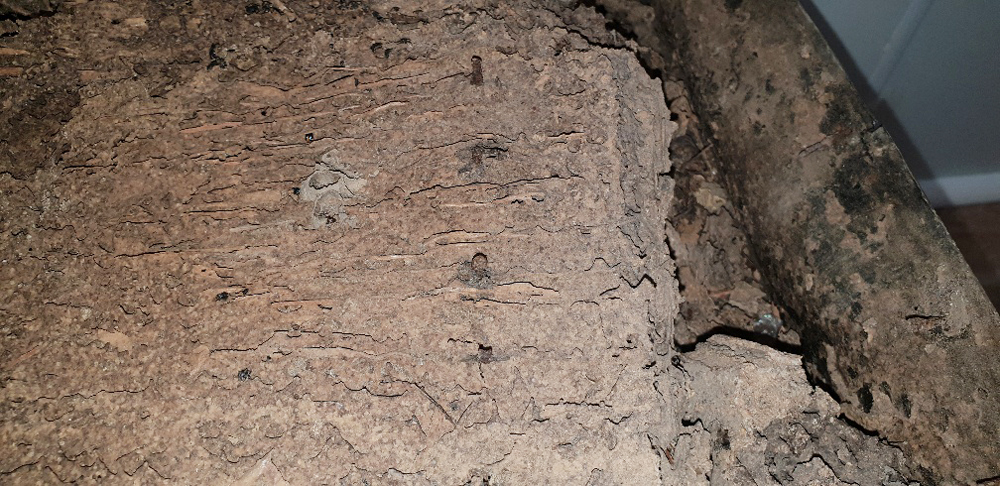
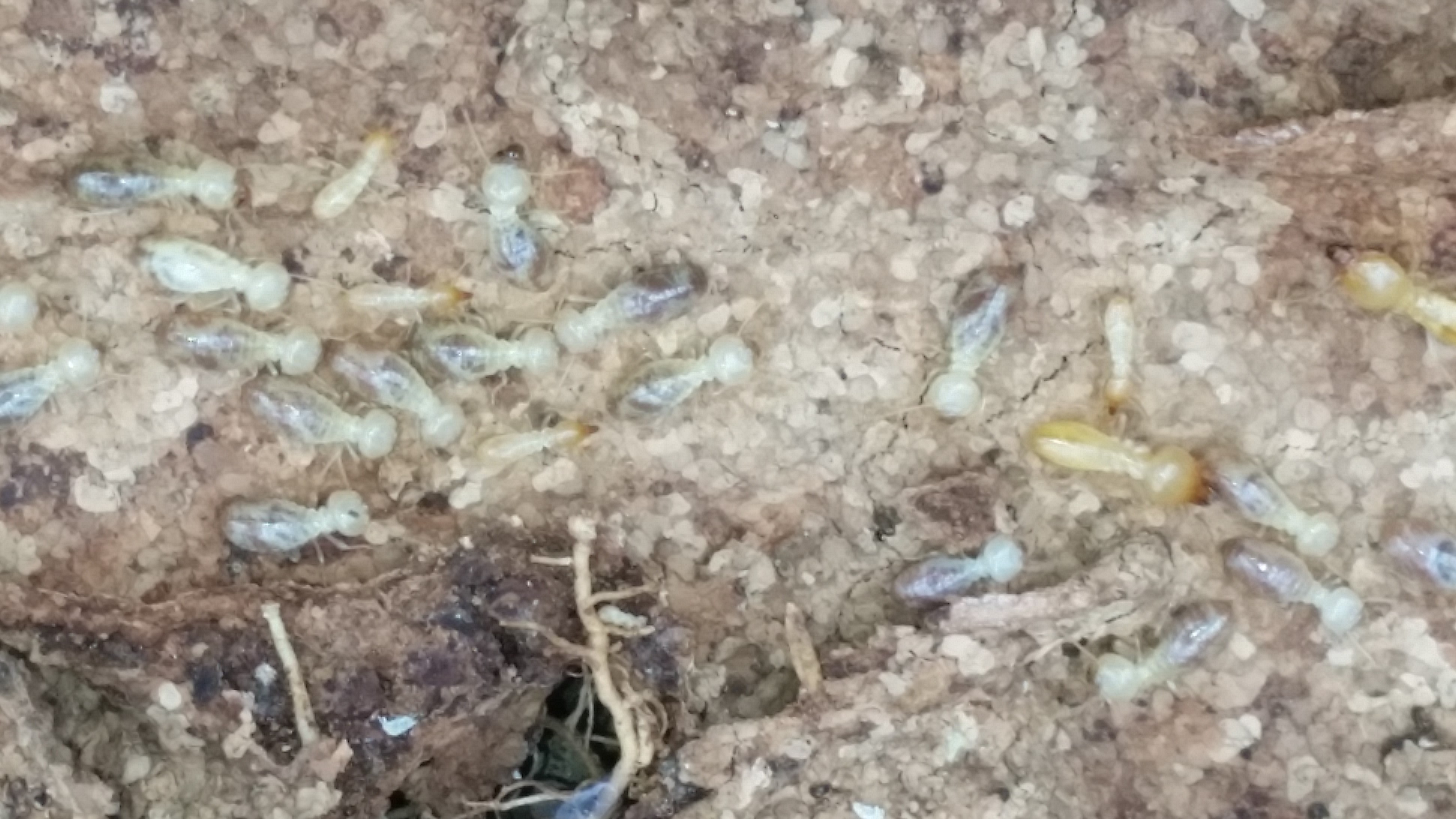
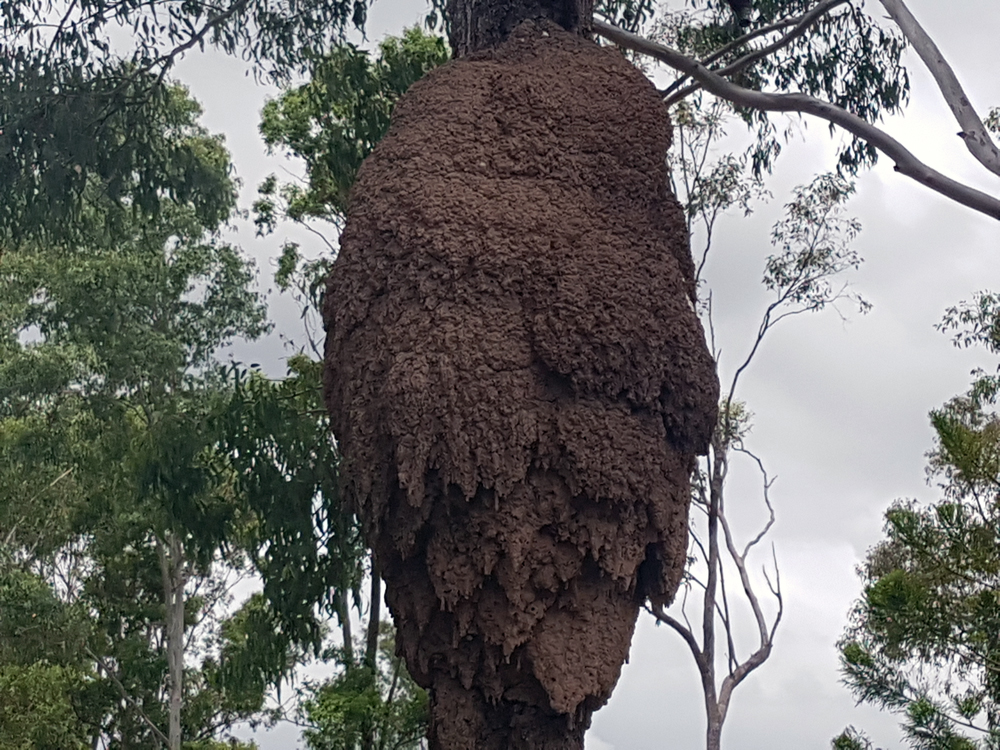
Different species of termites have different habits, therefore it is important to correctly identify the species and genus so the correct method of treatment can be applied.
Some termites can have multiple entry points into your home, where others have just one. Some have arboreal nests and some have subterranean. They can even form stalactites and stalagmites, as you can see in the photos on this page and these are only some of the fascinating facts about termites.
Termite alates (a flying reproductive termite) only leave the colony when a nuptial flight takes place. Alate males and females pair up together and then land in search of a suitable place for a colony, e.g. decay stump etc.. A termite king and queen do not mate until they find such a spot. When they do, the excavate a chamber big enough for both, close up the entrance and proceed to mate. After mating, the pair never go outside and spend the rest of their lives in the nest. Nuptial flight time varies in each species. For example, alates in certain species emerge during the day in summer while others emerge during the winter. The nuptial flight may also begin at dusk, when the alates swarm around areas with lots of lights. The time when nuptial flight begins depends on environmental conditions, time of day, moisture wind speed and precipitation. The number of termites in a colony also varies, with the larger species have 100-1,000 individuals. However some termite colonies, including those with large individuals, can number in the millions.
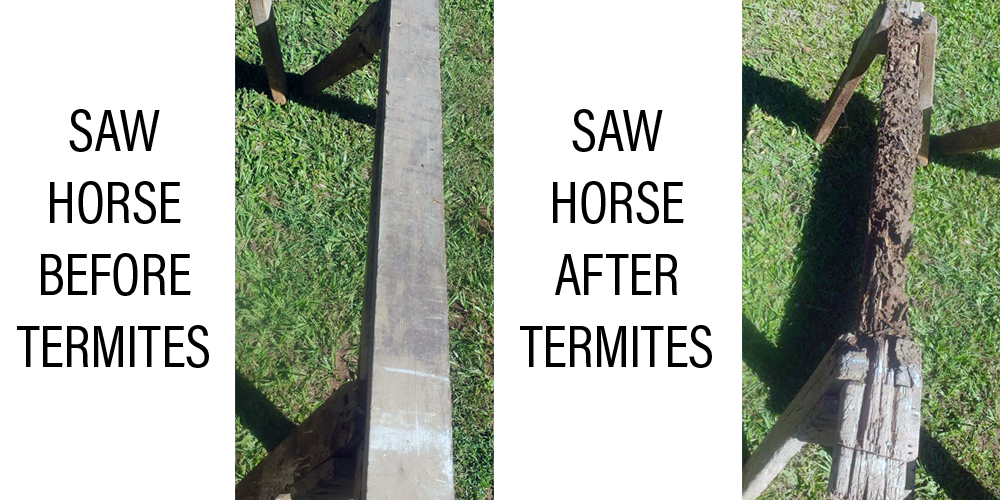
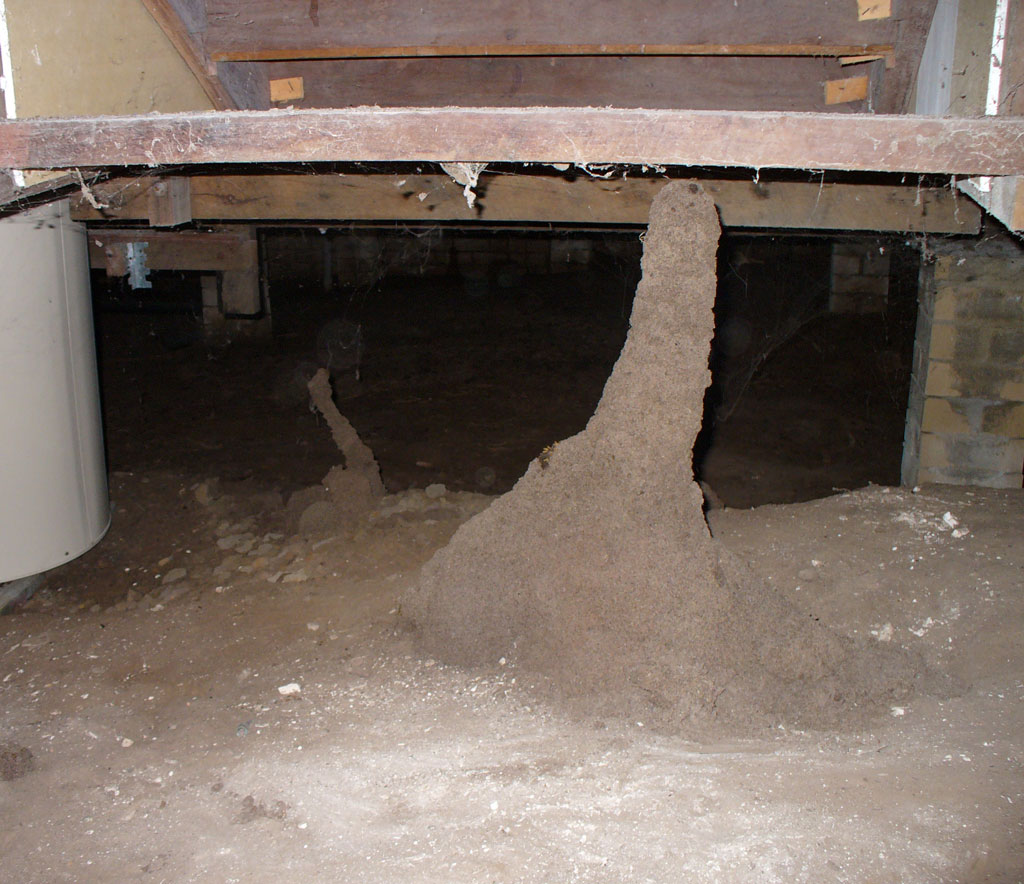
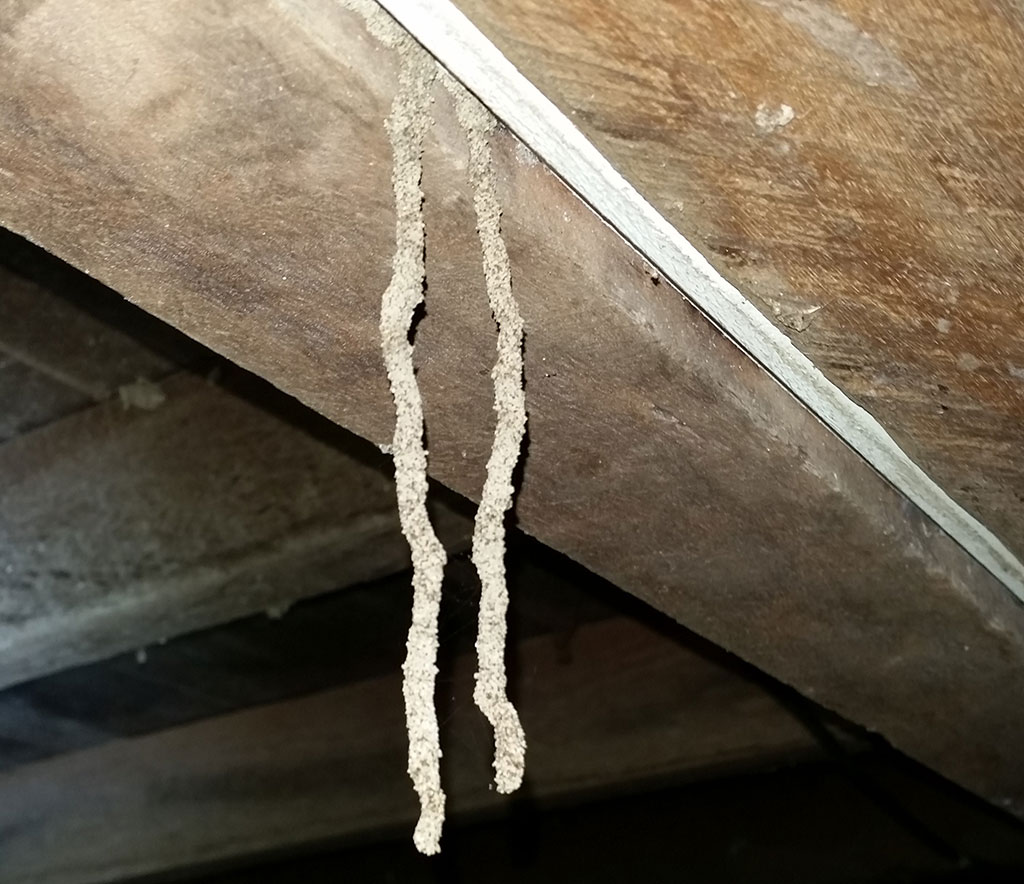
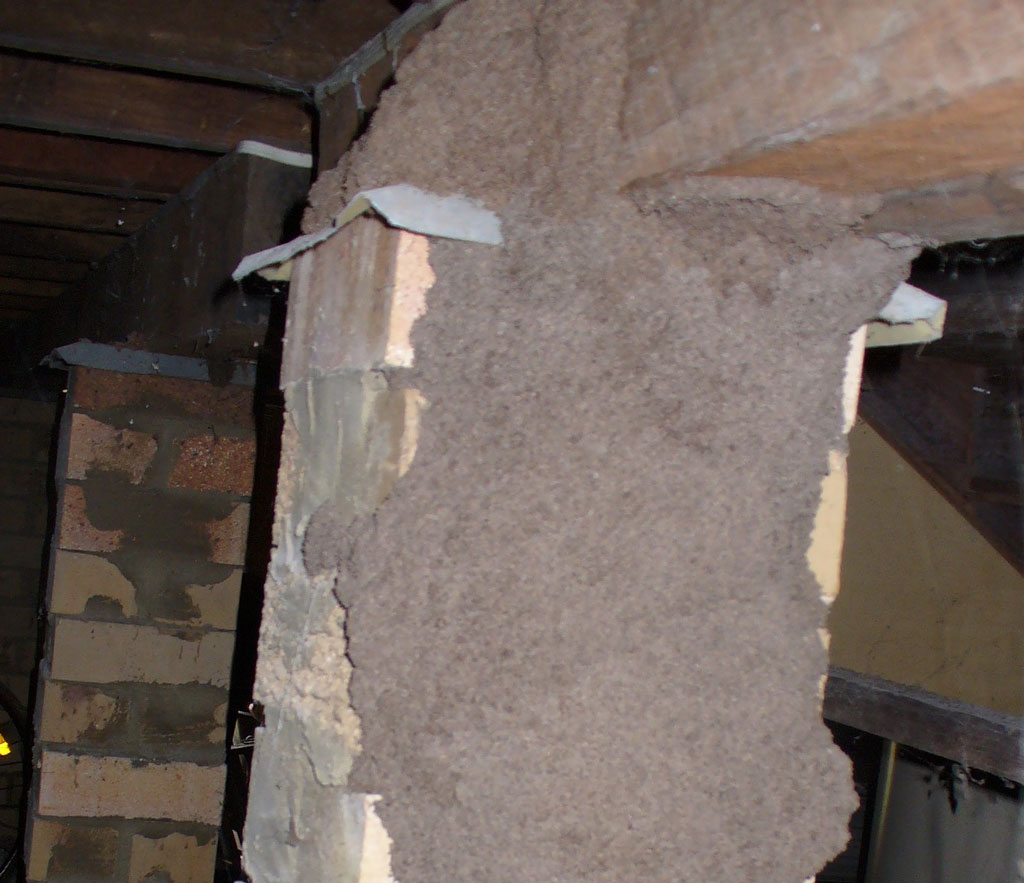
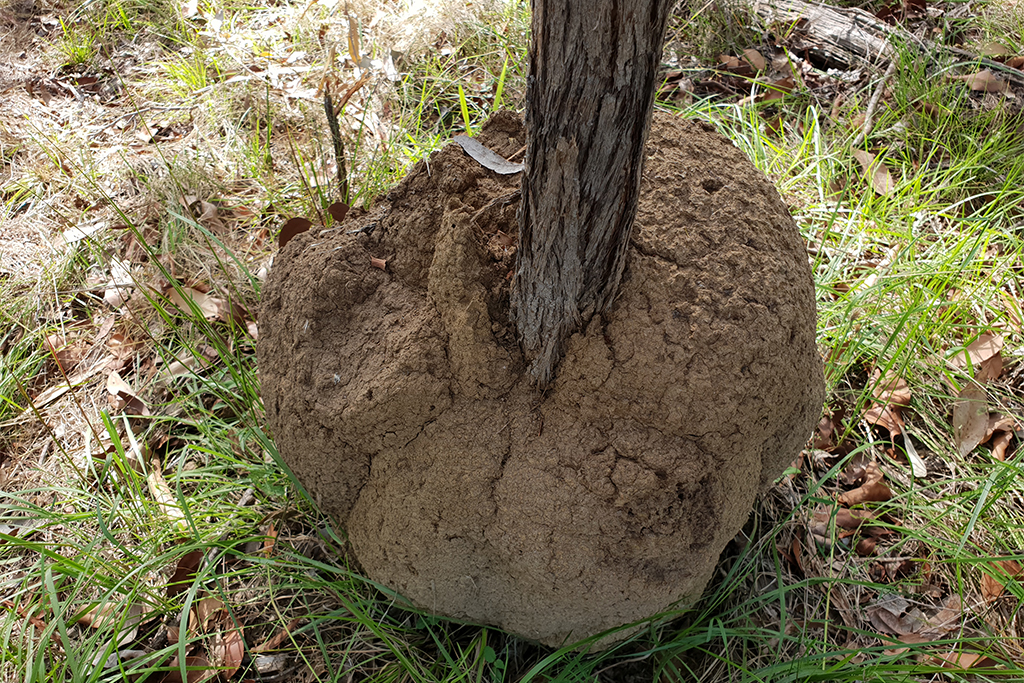
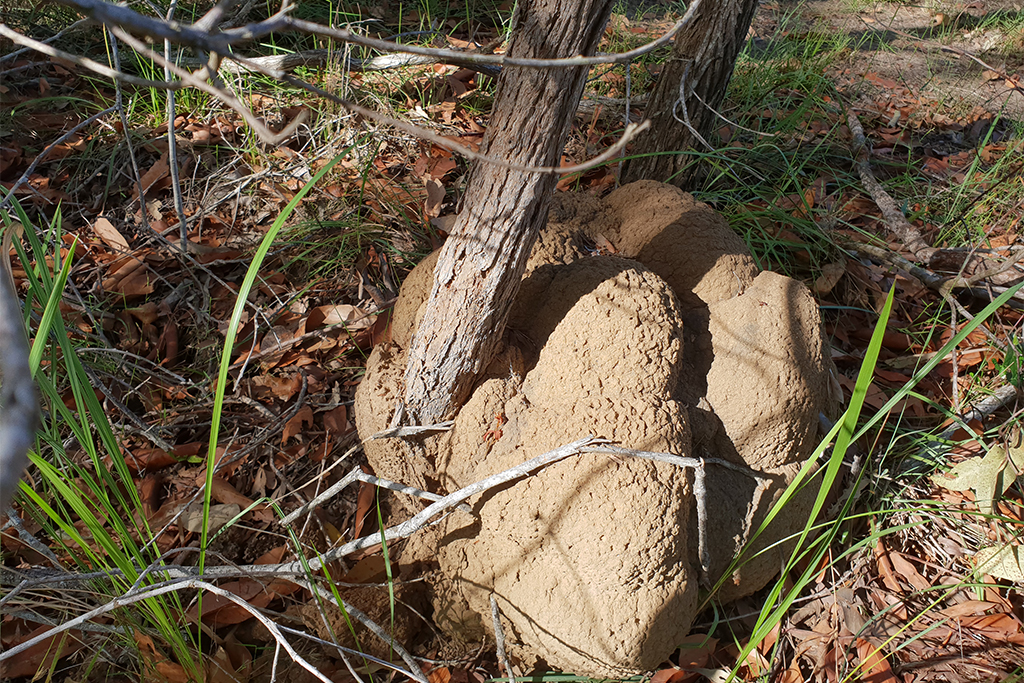
Not all termites devour timber, these particular termites eat grass, as you can see in the photos, they have constructed their nest down around the bottom of the trees rather than further up the tree.
CONTACT DETAILS
PROPRIETORS
Paul and Rhaelee Feekings
Mobile: 0409 225 022
Office: 0448 080 960
Trading Hours
Monday – Friday: 8am- 5pm
ABN: 62 078 160 233
QBCC No: 15041282
PMT - 013349
LOGIN

